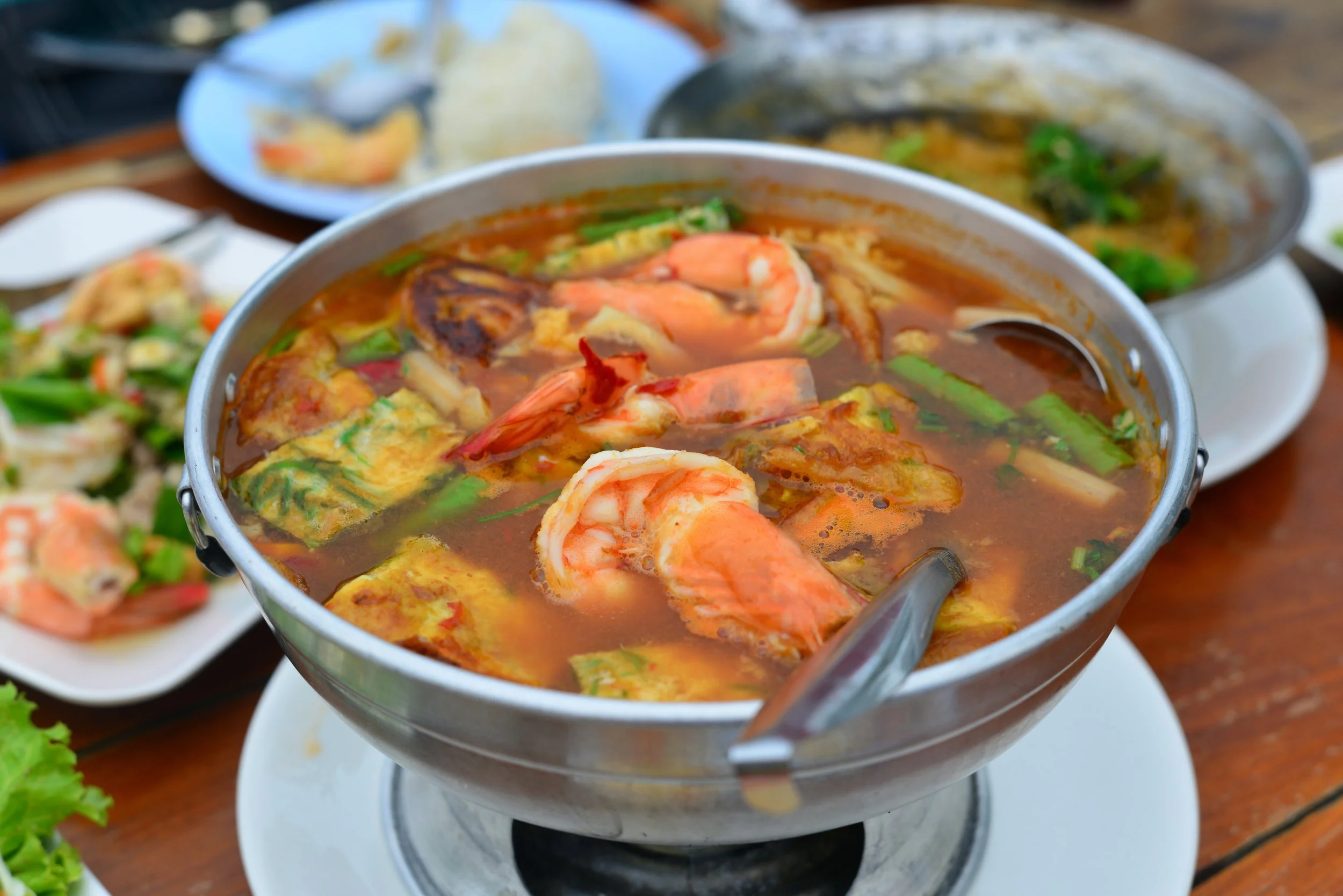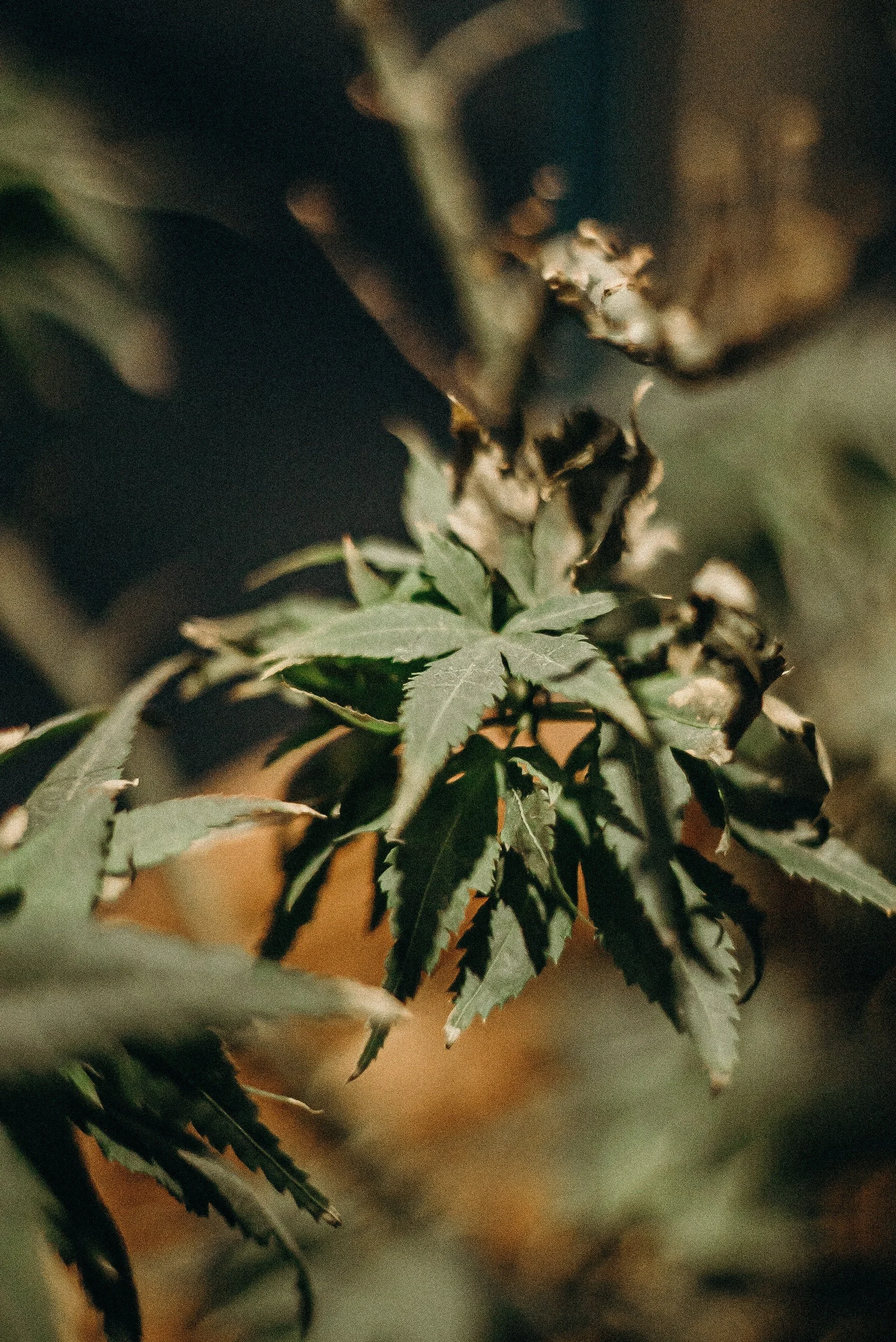A New Old Ingredient in Thailand
By John McMahon
My friend’s mother, Miw Mae, needed help in her garden, and so I went to move around big ceramic pots of red bamboo. She kept warning me to watch out for the snakes. She had seen one recently and it was a cobra she said. Every snake Miw Mae sees is a cobra. I joked with her about how she could use that snake to make som tom, Thailand's famous papaya salad.
No, she told me, not som tom, pad krapow ngo how sai ganja. Cobra fried with basil and cannabis.
“It would make your blood hot but not make you silly,” she says.
When she was a kid, cannabis was a common ingredient in many Thai dishes. The bud was wrapped around a stick using traditional methods to make the legendary Thai stick; the leaves and roots were diced or pressed and used in soups and stir fries, as well as eaten raw with curry paste. This was common until the late 1970s, when Thailand instituted its U.S.-sponsored drug eradication program.
Completely Decriminalized
That program and its spawn ended on June 9, 2022, when cannabis was completely decriminalized. The government put a point to it by releasing 3,000 people serving sentences related to the drug, and in some cases returning their seized weed.
“Marijuana is no longer an illegal drug, but it is a plant that will bring medical benefits, create more job opportunities and earn money from households to industrial levels,” said Anutin Charnvirakul, Thai minister of public health, at a June 10 celebration of the decriminalization in his hometown of Buri Ram, according to The Pattaya News.
The first legal barriers began to ease away in 2018; shops that had started preparing then were able to open immediately, and weed was back on the menu in restaurants across the country for the first time in five decades.
Since then, restaurants have begun serving up traditional foods and haute cuisine using the plant. Kiew Kai Ka in Bangkok, for example, is an elegant cafe that prides itself on using local ingredients, which now include cannabis in several of its signature dishes. Traditional green curry, egg and chicken soup, along with pan classics like pork fried with basil and international favorite tom yum kung are all now made utilizing the leaf to enhance their flavors.
Cannabis leaves and roots contain an amino acid called glutamic acid. This amino acid lends food a hit of umami that enhances the other flavors in the dish.
“People used cannabis in foods such as noodle soups,” says Dr. Waleerat Kraikosol of Chao Phraya Abhaibhubjur Hospital in PrachinBuri. “It’s fragrant, and it’s kind of like MSG—it improves taste.”
And so, chefs and other food producers are having fun with it.
Good Souls, which serves vegetarian staple foods to flash packers in Chiang Mai, has added six new dishes that use weed to its menu: infused pesto pasta, a veggie burger, vegan steak and a traditional Burmese tea leaf salad.
A traditional snack restaurant, Kanom Siam is famous for its pandan pancakes topped with coconut ice cream has tweaked the recipe by adding cannabis extract to boost the flavors and have found a new customer base with those interested in tasting the plant in different foods.
At this rate, there will soon be weed in all things edible. Teas and coffees infused with the leaf are available in malls and street side shops everywhere. Pizza Company, Thailand’s own Pizza Hut, offers it on pizza. 7-Eleven sells cannabis-infused lime water and even my local budget steak house now offers a weed sauce along with its normal green pepper and cream of mushroom options.
The shops that opened immediately are importing strains from Amsterdam, California and Africa. Those are sold for prices that are near or even more than Europe or the U.S., but homegrown weed is on its heels as growers make improvements to the low-grade shake that has been available illegally for years.
The latter is perfect, though, for cooking, says Kate Cherolawn who graduated with a degree in hospitality from Silpakorn University and sees this as a trend, something fun and interesting to follow. She’s not a smoker but has since experimented with making omelets and fried curries with cannabis leaf and pressed stems.
“I like that it is traditional Thai and it can replace MSG,” she says. “Does it make me mao [high]? I don’t think so.”
Foods Are Not ‘Edibles’
Though the government created a kind of legal vacuum when it removed cannabis from the controlled substances list in 2022, a few regulations carried over from the initial legislation that was passed in 2018, which legalized cannabis for medical reasons. One of those regulations restrict the amount of THC that can be infused into food or drink at .2 percent.
Thai people have traditionally used the plant in food for the flavoring, not to get high—that’s what the Thai stick was for.
One of the first legal restaurants serving weed-enhanced foods, Ma Chim Kan or Let’s Taste Cannabis, was opened in 2018 under the auspices of those first laws, thanks to its connection to Chao Phraya Abhaibhubjur Hospital in PrachinBuri. The hospital has been at the forefront of studying the health benefits of cannabis in Thailand and was influential in achieving medical use laws.
“Thai people have used cannabis in their cooking since ancient times,” wrote Dr. Supaporn Pitiporn, the hospital’s assistant director, in a handout available at the cafe. “The taboo has been broken, now we are welcoming cannabis back to Thai kitchens…the cannabis leaf is known to improve the appetite and make people relaxed,”
The historical record tracking the plant’s use in Thai food is sparse, but it is recommended as an ingredient in an eel curry in what’s been pronounced Thailand’s first-known cookbook, Mae Krua Hua Pak. The book, subtitled Royal Thai Cuisine, was printed from a series of articles written by Lady Plein Passakorawongse for a magazine long lost to history. She initially gave it away to guests at her wedding but decided to publish on her own. In its 11th edition, it is still considered a staple of Thai cooking today, more than a hundred years later.
Perhaps because weed was initially criminalized in 1938 with the creation of modern Thailand, its use doesn’t show up in later cookbooks. This law, though, had little effect on most of the population's tradition of growing, harvesting and processing cannabis for their food, health and of course Thai stick for relaxation.
Cannabis was still an ingredient sold throughout the country. The six indigenous strains—Foi Thong Phu Pha Yon Issara, Phu Phan Squirrel-Tailed, Sakon Nakhon Tiger-Tailed, Tanaosri White Stem and Tanaosri Red Stem—could be found in markets openly for sale across the country. A good cook knew what strain would enhance what dishes and would usually purchase the plant already deflowered, the bud being sold separately.
An American Intervention
That extralegal use ended, for the most part, when the Thai government signed on with U.S-sponsored eradication program in 1978. Thailand had been the US’s greatest ally during the Vietnam conflict. An unfortunate result of that alliance is that the US became flooded with cheap heroin that was grown, processed and exported from Northern Thailand. During the Nixon administration, Thailand was asked to take part in a stringent eradication program that would encourage farmers to turn from poppies to growing coffee, all overseen by the CIA and later DEA. As a result, growing and using cannabis became a major crime.
Still, in remote regions in the mountains of Northern Thailand, the ingredient never truly vanished from the cook pot. For Miw Mae, who grew up in the northeastern region of Issan, it was as common as garlic or basil.
“It would grow naturally when I was child,” she says. “We didn’t think about using it to get mao. We were sent by our mothers to find the leaves and roots.”
I asked her if she would start using it again to make her famous pad krapow or fiery pad prik. She would if it was easy to buy, she said, because it tastes better than MSG and it’s natural.
There have been reports speculating that the current legal vacuum will soon be filled with the type of complicated regulations Thailand currently has on the sale and use of alcohol.
“For Thailand to reach this point of decriminalized cannabis so quick is due to the fact that cannabis is a native plant to the region and Thai people knows what it is, have seen their elders used it whether for cooking, traditional medicine, or simply smoking before, during and after the war on drugs,” says Arun Avery, attorney for Thailand’s most prominent cannabis advocacy group, Highland. “That pushed cannabis to the narcotics list in the past. To have cannabis free again is just to release us from having to hide in secret for using it.”
If this stands true, people can expect to experience all of their favorite Thai traditional foods as they were eaten for generations. Cannabis use will be commonplace in both cooking and for recreational use. A new source of income will help those who have suffered most from three years of shut down—those involved in tourism and small restaurant owners—and everything will be sabai sabai.


